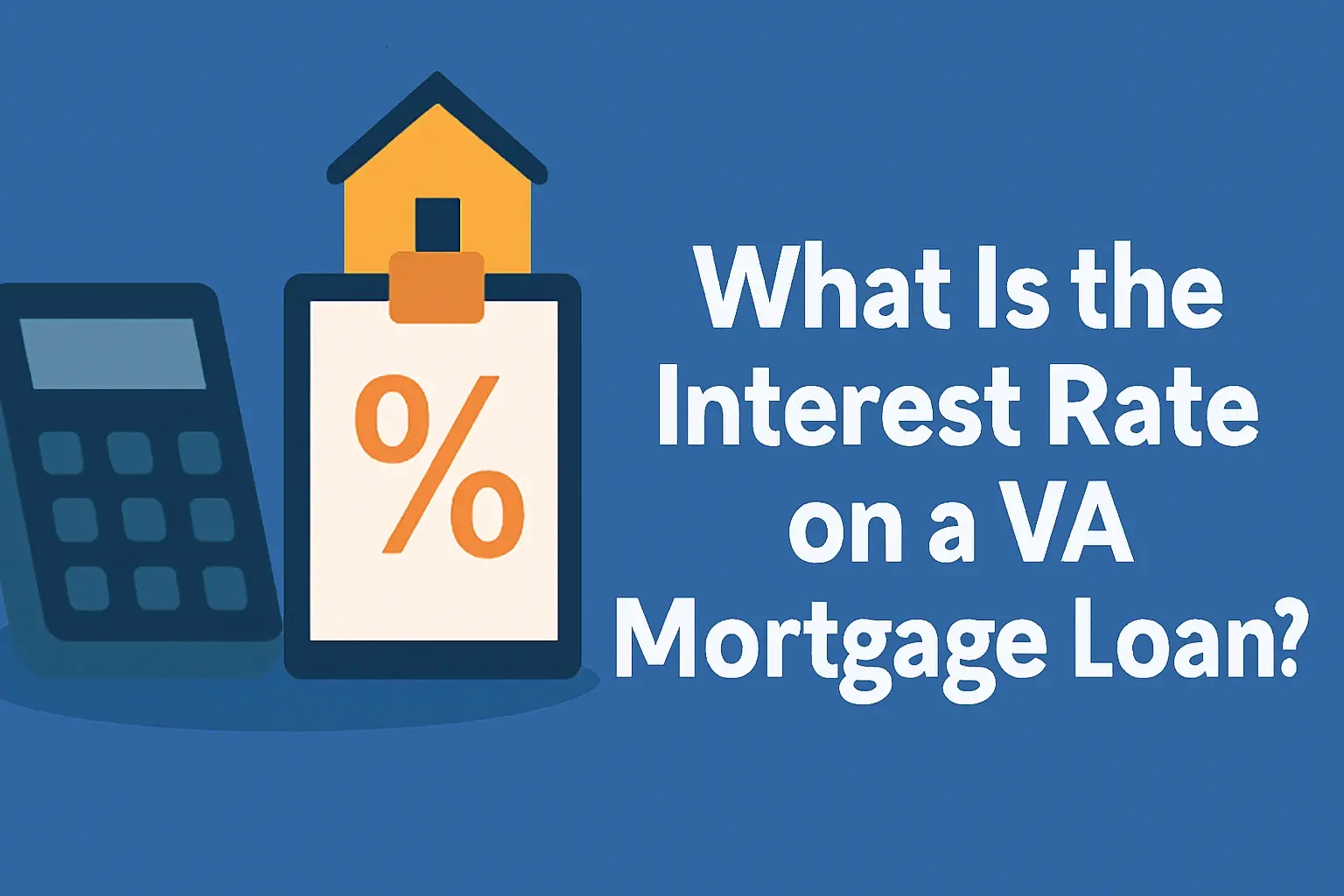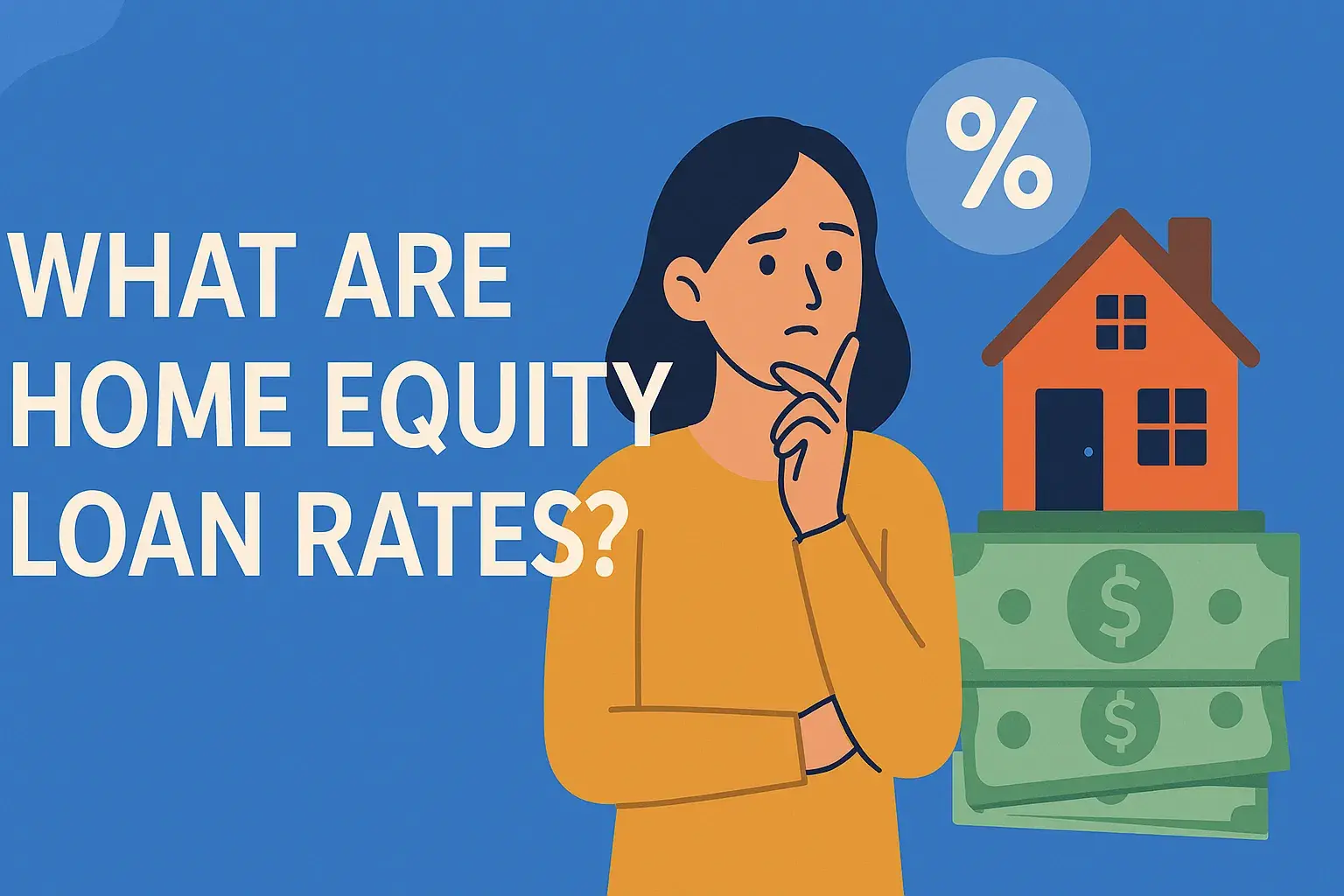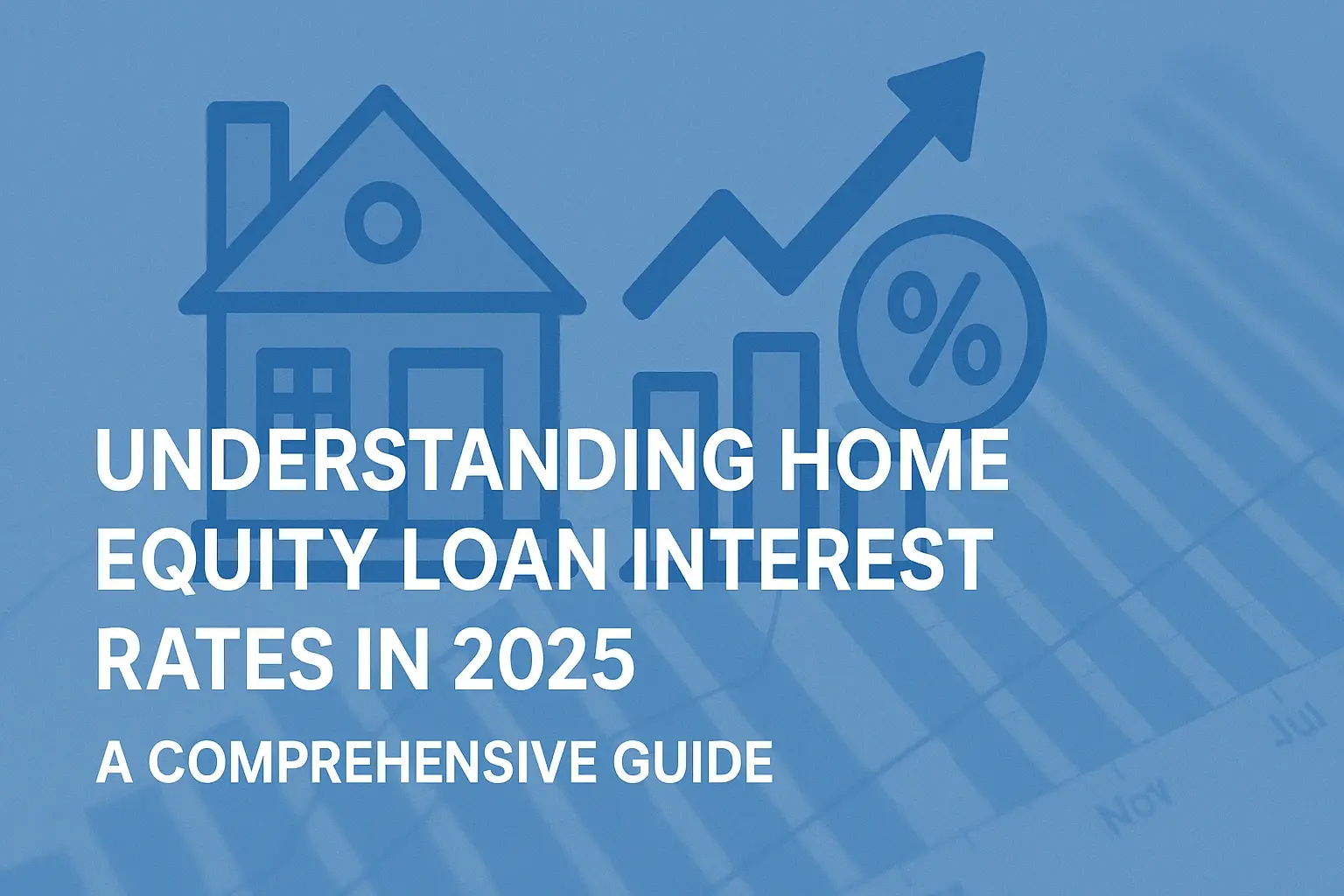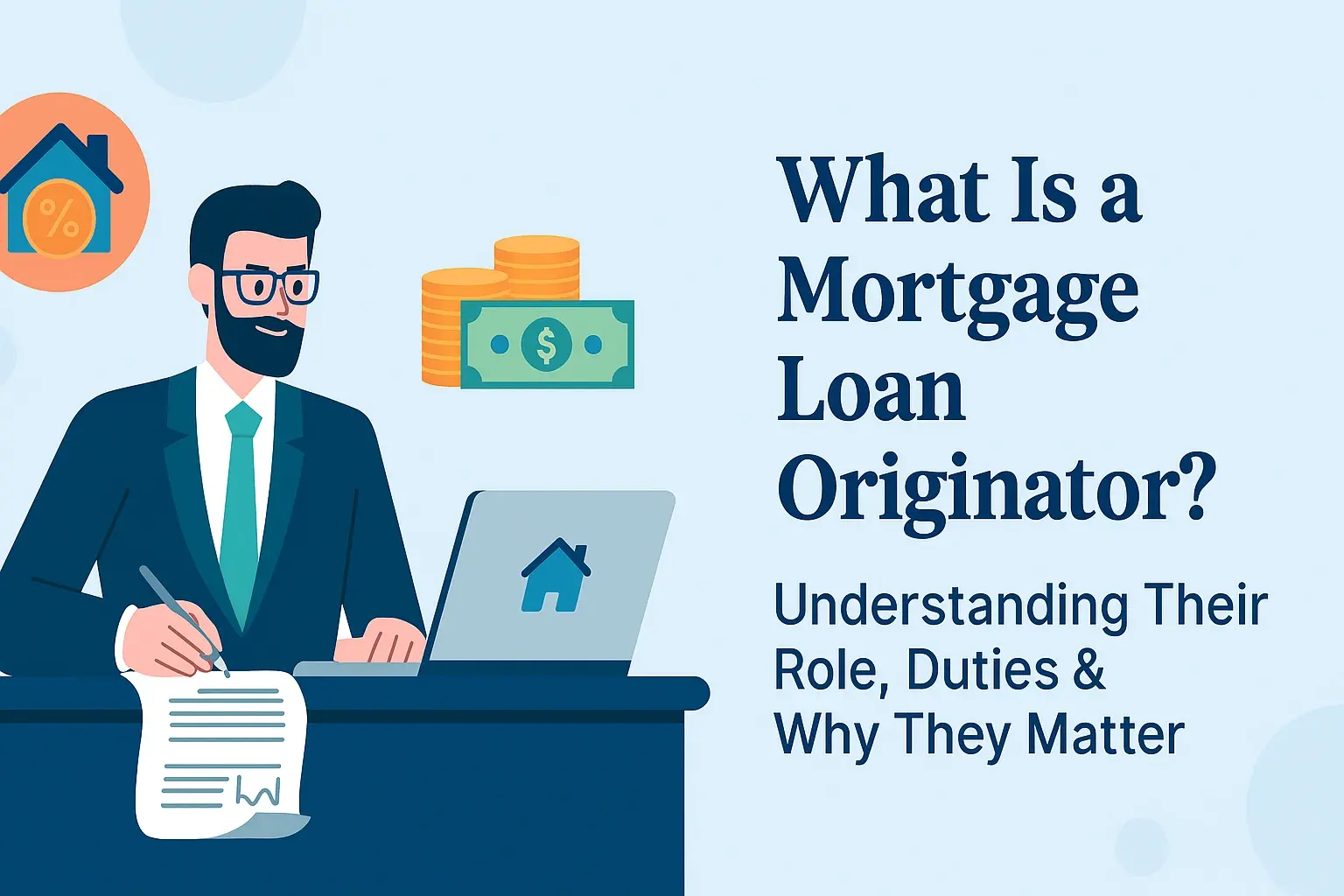-
Posted on: 23 Aug 2024

-
Navigating the home loan approval process can feel daunting, but understanding the key factors lenders consider is the first step. This comprehensive guide will demystify what you need to know to answer the crucial question: "Can I get approved for a home loan?" We cover credit scores, income, debt, and more, equipping you with the knowledge to secure your dream home.
Understanding Lender Criteria: The Pillars of Approval
When a lender evaluates your home loan application, they are essentially assessing your risk as a borrower. The primary goal is to determine if you are likely to repay the loan consistently and on time. This assessment is built upon several key pillars, each carrying significant weight in the decision-making process. For 2025, these fundamental criteria remain largely consistent, though lenders may refine their internal algorithms and risk tolerances based on market conditions and economic forecasts. Understanding these pillars is paramount to answering "Can I get approved for a home loan?" with confidence.
The "5 Cs" of Lending
While not always explicitly stated, lenders often operate under a framework that can be summarized by the "5 Cs" of lending:
- Character: This is primarily reflected in your credit history and score. It indicates your past behavior in managing debt and fulfilling financial obligations. A strong character suggests reliability.
- Capacity: This refers to your ability to repay the loan, assessed through your income, employment history, and debt-to-income ratio. Lenders want to see a stable and sufficient income stream.
- Capital: This is the money you have available for a down payment, closing costs, and reserves. A larger capital contribution reduces the lender's risk.
- Collateral: This is the property you intend to purchase. The lender will appraise the property to ensure its value is sufficient to cover the loan amount should you default.
- Conditions: This encompasses the overall economic climate and the specific terms of the loan you are seeking. Lenders consider factors like interest rate trends and the local housing market.
Lender-Specific Guidelines
It's important to recognize that different lenders have varying risk appetites and internal guidelines. While federal regulations set minimum standards, particularly for government-backed loans, conventional lenders can set their own criteria. Some may be more lenient on credit scores but stricter on debt-to-income ratios, while others might prioritize a larger down payment. Exploring options with multiple lenders is crucial to find one that aligns with your financial profile.
The Importance of a Comprehensive Financial Picture
Lenders don't just look at isolated numbers; they aim to build a comprehensive picture of your financial health. This means scrutinizing all aspects of your financial life to predict your future ability to manage mortgage payments. The following sections delve into each of these critical components in detail.
Credit Score: Your Financial Report Card
Your credit score is arguably the most influential factor in determining your eligibility for a home loan and the interest rate you'll receive. It's a three-digit number that summarizes your creditworthiness, based on your credit history. For 2025, the importance of a good credit score remains paramount.
Understanding Credit Scores
Credit scores are calculated by credit bureaus (Equifax, Experian, and TransUnion) using algorithms that analyze your credit reports. The most widely used scoring model is FICO, with different versions existing. Generally, scores range from 300 to 850.
Credit Score Ranges and Their Implications (2025 Estimates)
While specific thresholds can vary slightly by lender and loan type, here's a general breakdown of how credit scores are typically viewed:
Score Range Description Likelihood of Approval Typical Interest Rate Impact 800+ Exceptional Very High Lowest rates available 740-799 Very Good High Competitive rates 670-739 Good Moderate to High Standard rates, may be slightly higher 580-669 Fair Moderate, often requires higher down payment or specific loan programs Higher rates, more fees Below 580 Poor Very Low, difficult to get approved without significant compensating factors or specialized loans Very high rates, often unfeasible Factors Affecting Your Credit Score
Several key factors contribute to your credit score:
- Payment History (35%): Making payments on time is the most critical factor. Late payments, defaults, and bankruptcies can severely damage your score.
- Amounts Owed (30%): This refers to your credit utilization ratio – the amount of credit you're using compared to your total available credit. Keeping this below 30% is generally recommended.
- Length of Credit History (15%): A longer history of responsible credit management is beneficial.
- Credit Mix (10%): Having a mix of credit types (e.g., credit cards, installment loans) can be positive, but it's less impactful than payment history or amounts owed.
- New Credit (10%): Opening multiple new credit accounts in a short period can temporarily lower your score.
Improving Your Credit Score
If your credit score is lower than you'd like, there are proactive steps you can take:
- Pay all bills on time, every time.
- Reduce your credit card balances to keep utilization low.
- Avoid opening unnecessary new credit accounts.
- Dispute any errors on your credit reports.
- Consider a secured credit card or credit-builder loan if you have limited credit history.
It often takes several months to see significant improvements, so starting early is key if you're planning to buy a home in the near future. For more detailed strategies, consult our guide on Improving Your Chances of Approval.
Income and Employment Stability
Lenders need assurance that you have a reliable and sufficient income to cover your mortgage payments. This involves looking at both the amount of your income and the stability of its source.
Verifying Your Income
You'll need to provide documentation to prove your income. This typically includes:
- Pay Stubs: Recent pay stubs (usually the last 30 days) showing your gross monthly income.
- W-2 Forms: For W-2 employees, typically the last two years of W-2s to show consistent earnings.
- Tax Returns: For self-employed individuals or those with variable income, the last two years of federal tax returns (all schedules) are usually required.
- Bank Statements: To verify direct deposits and other income sources.
Employment Stability
Lenders prefer to see a consistent employment history. Generally, they look for:
- At least two years in the same line of work.
- No unexplained gaps in employment.
- Stable employment with your current employer.
If you've recently changed jobs or careers, lenders may want to see that your new role offers comparable or higher pay and that you have a strong track record in your field. For those who are self-employed, lenders will meticulously review your business's financial health and your personal income derived from it over the past two years.
Types of Income Considered
Lenders consider various forms of income, but some are viewed more favorably than others:
- Wages/Salary: The most straightforward and preferred type of income.
- Self-Employment Income: Requires thorough documentation and may be averaged over two years.
- Commission/Bonus Income: Typically requires a two-year history of consistent earnings and may be averaged.
- Alimony/Child Support: Can be counted if you can prove consistent receipt for at least three years and intend to continue receiving it.
- Social Security/Disability Benefits: Generally accepted if stable and expected to continue.
- Pension/Retirement Income: Acceptable if consistent and verifiable.
It's crucial to discuss any non-traditional income sources with your loan officer to understand how they will be treated.
Debt-to-Income Ratio (DTI) Explained
Your Debt-to-Income ratio (DTI) is a critical metric that lenders use to assess your ability to manage monthly payments and repay your debts. It compares your total monthly debt obligations to your gross monthly income.
Calculating Your DTI
The calculation is straightforward:
DTI = (Total Monthly Debt Payments / Gross Monthly Income) x 100
Your total monthly debt payments include:
- Proposed mortgage principal and interest (P&I)
- Property taxes
- Homeowner's insurance
- Homeowners Association (HOA) fees (if applicable)
- Minimum payments on credit cards
- Car loan payments
- Student loan payments
- Any other recurring loan or debt payments
Note: Your gross monthly income is your income before taxes and other deductions.
Understanding Front-End vs. Back-End DTI
Lenders often look at two types of DTI:
- Front-End DTI (Housing Ratio): This ratio compares your proposed housing expenses (P&I, taxes, insurance, HOA fees) to your gross monthly income. Many lenders prefer this to be no more than 28% to 31%.
- Back-End DTI (Total Debt Ratio): This ratio compares all your monthly debt obligations (including housing expenses) to your gross monthly income. This is the more commonly cited DTI. For most conventional loans, lenders generally prefer a back-end DTI of 43% or lower. However, some programs, like FHA loans, may allow for higher DTIs (up to 50% or even 57% in certain cases with compensating factors), and some conventional lenders might go up to 45% or 50% with strong credit scores and significant reserves.
Typical DTI Requirements for Loan Types (2025 Estimates)
Loan Type Recommended Front-End DTI Recommended Back-End DTI Maximum Back-End DTI (with compensating factors) Conventional (Fannie Mae/Freddie Mac) ~28% ~36% - 43% Up to 50% FHA Loan ~31% ~41% Up to 50% (sometimes 57%) VA Loan ~25% ~41% Up to 50% (with strong residual income) USDA Loan ~29% ~41% Up to 50% Managing Your DTI
If your DTI is too high, you have a few options:
- Increase your income: This could involve seeking a raise, taking on a side hustle, or selling assets.
- Decrease your debt: Focus on paying down credit cards, car loans, or other personal loans before applying for a mortgage.
- Reduce your housing costs: Consider a less expensive home or a smaller down payment (though this can increase your DTI if it leads to higher monthly payments).
- Look into specific loan programs: Some government-backed loans have more flexible DTI requirements.
Reducing your DTI is a crucial step in demonstrating your capacity to handle a mortgage. For more detailed advice, explore our section on Improving Your Chances of Approval.
Down Payment and Loan-to-Value (LTV)
The down payment is the portion of the home's purchase price that you pay upfront, and it directly impacts your Loan-to-Value (LTV) ratio. Both are significant factors in loan approval and terms.
Understanding the Down Payment
The down payment reduces the amount you need to borrow. A larger down payment generally:
- Lowers your LTV ratio.
- Reduces your monthly mortgage payments.
- May help you avoid Private Mortgage Insurance (PMI) on conventional loans.
- Makes you a less risky borrower in the eyes of the lender.
While 20% is often cited as the ideal down payment to avoid PMI, many loan programs allow for much lower down payments.
Loan-to-Value (LTV) Ratio
The LTV ratio compares the amount of your loan to the appraised value of the home. It's calculated as:
LTV = (Loan Amount / Appraised Value of Home) x 100
For example, if you're buying a home appraised at $300,000 and you make a $60,000 down payment, your loan amount is $240,000. Your LTV would be ($240,000 / $300,000) x 100 = 80%.
Typical LTV Requirements and PMI Implications (2025 Estimates)
LTV Ratio Down Payment Percentage PMI Required (Conventional Loans) Loan Type Considerations 95% or higher 5% or less Yes Can be difficult to qualify for with lower credit scores. 90% - 95% 5% - 10% Yes Common for first-time homebuyers. 80% - 90% 10% - 20% Yes (until LTV reaches 80%) More favorable terms. 80% or less 20% or more No Best terms, lowest interest rates, avoids PMI. Private Mortgage Insurance (PMI)
For conventional loans, if your LTV is above 80%, lenders typically require you to pay PMI. This insurance protects the lender in case you default on the loan. PMI premiums are usually paid monthly as part of your mortgage payment, but they can also be paid upfront or a combination of both. Once your LTV drops to 80% or below, you can request to have PMI removed. It's automatically terminated once your LTV reaches 78%.
Other Loan Programs and Down Payments
- FHA Loans: Require a minimum down payment of 3.5% for borrowers with a credit score of 580 or higher. If your score is between 500-579, you'll need 10% down. FHA loans have Mortgage Insurance Premiums (MIP) that are paid both upfront and annually, regardless of LTV.
- VA Loans: For eligible veterans and active-duty military personnel, VA loans often require no down payment (0% LTV).
- USDA Loans: For eligible rural and suburban homebuyers, USDA loans also offer a 0% down payment option.
The amount of your down payment can significantly influence your approval odds and the overall cost of your mortgage. For strategies on saving for a down payment, consider resources on Improving Your Chances of Approval.
Types of Mortgages and Your Eligibility
Choosing the right mortgage type is crucial, as each has different eligibility requirements, terms, and benefits. Understanding these options can help you determine which loan best fits your financial situation and increases your chances of approval.
Conventional Loans
These are mortgages not backed by a government agency. They are typically offered by banks, credit unions, and mortgage companies.
- Conforming Loans: Meet the loan limits set by Fannie Mae and Freddie Mac. Generally require a minimum credit score of 620, a DTI of 43% or lower, and a down payment of at least 3% (though 20% is needed to avoid PMI).
- Non-Conforming Loans (Jumbo Loans): Exceed the conforming loan limits. They often have stricter requirements, including higher credit scores (700+), lower DTIs, and larger down payments.
Government-Backed Loans
These loans are insured or guaranteed by federal agencies, making them less risky for lenders and often more accessible for borrowers with specific needs or less-than-perfect credit.
- FHA Loans (Federal Housing Administration): Designed for borrowers with lower credit scores (as low as 500 with 10% down, or 580 with 3.5% down) and smaller down payments. They require MIP.
- VA Loans (Department of Veterans Affairs): Available to eligible veterans, active-duty military, and surviving spouses. They typically offer no down payment requirement and no PMI, though a VA funding fee applies. Credit score requirements vary by lender but are often more flexible than conventional loans.
- USDA Loans (U.S. Department of Agriculture): For eligible rural and suburban homebuyers. They offer 0% down payment options and competitive interest rates. Income limits and property location requirements apply.
Fixed-Rate Mortgages (FRMs)
The interest rate remains the same for the entire life of the loan (typically 15 or 30 years). This provides predictable monthly payments, making budgeting easier. Eligibility is based on standard credit, income, and DTI criteria.
Adjustable-Rate Mortgages (ARMs)
These loans have an interest rate that is fixed for an initial period (e.g., 5, 7, or 10 years) and then adjusts periodically based on market conditions. ARMs often have lower initial interest rates than FRMs, which can be attractive for borrowers who plan to sell or refinance before the rate adjusts.
- Eligibility: Similar to fixed-rate loans, but lenders may scrutinize your ability to handle potential payment increases more closely.
Which Loan Type is Right for You?
Your eligibility and the best loan type depend on several factors:
- Credit Score: Higher scores open more doors to conventional loans with better terms. Lower scores may necessitate FHA or other government-backed loans.
- Down Payment: If you have 20% or more, conventional loans are ideal. If you have less, FHA, VA, or USDA loans might be your best bet.
- Military Status: VA loans offer significant advantages if you are eligible.
- Location: USDA loans are restricted to specific geographic areas.
- Income Stability: Lenders will assess your income and employment history for all loan types.
Consulting with a mortgage broker or loan officer can help you navigate these options and determine which loan program aligns best with your circumstances and increases your likelihood of approval. For guidance on preparing your finances, see Improving Your Chances of Approval.
Special Circumstances and Alternative Loans
Life doesn't always fit neatly into standard boxes. Lenders understand that borrowers may have unique situations, and there are often alternative loan options and strategies to accommodate them. If you have concerns about your eligibility due to less-than-perfect credit, fluctuating income, or other factors, exploring these avenues can be beneficial.
Non-QM Loans (Non-Qualified Mortgages)
These loans do not meet the Consumer Financial Protection Bureau's (CFPB) "qualified mortgage" standards. This often means they have more flexible underwriting criteria, making them suitable for borrowers who:
- Are self-employed with complex income documentation.
- Have recent credit challenges but can demonstrate ability to repay.
- Have significant assets but inconsistent income.
- Are looking for higher loan amounts (jumbo loans).
Non-QM loans often require larger down payments and may have higher interest rates than QM loans, reflecting the increased risk for the lender. However, they can be a viable option for those who wouldn't otherwise qualify.
Loans for Self-Employed Borrowers
Self-employed individuals often face more scrutiny. Lenders may require:
- Two years of consistent self-employment income documented by tax returns (including all schedules).
- A profit and loss statement for the current year.
- Bank statements to verify cash flow.
Some lenders offer "asset-based" or "bank statement" loans for self-employed borrowers, which rely more heavily on verifiable assets and bank deposits rather than traditional income documentation. These usually come with higher rates and fees.
Loans for Borrowers with Past Credit Issues
If you have a history of bankruptcy, foreclosure, or significant delinquencies, approval can be challenging but not impossible.
- FHA Loans: Often more forgiving of past credit issues than conventional loans, especially after a certain waiting period (e.g., 2 years after Chapter 7 bankruptcy, 3 years after foreclosure).
- VA Loans: Can be lenient with past credit problems, especially if you have a strong overall financial profile.
- Specialized Lenders: Some lenders focus on borrowers with less-than-perfect credit, though expect higher interest rates and fees.
The key is to demonstrate that you have improved your financial habits and are now a reliable borrower.
Co-signers and Co-borrowers
If your income or credit score is borderline, a co-signer or co-borrower with a stronger financial profile can significantly improve your chances of approval. A co-signer is someone who agrees to be legally responsible for the loan if you fail to make payments. A co-borrower is someone who also owns the property and shares responsibility for the loan. Lenders will consider the creditworthiness and income of both parties.
Rent-to-Own Programs
While not a traditional mortgage, rent-to-own agreements can be a pathway to homeownership for those who need time to improve their credit or save for a down payment. In these arrangements, a portion of your rent may be credited towards the purchase price, and you lock in a purchase price for the future. This requires careful review of the contract terms.
Mortgage Credit Certificates (MCCs)
These are state or local government programs that offer tax credits to eligible low-to-moderate-income homebuyers. While not directly affecting loan approval, they can reduce your tax liability, freeing up more funds for mortgage payments or savings, which can indirectly help your application.
Exploring these alternative options is vital if your situation doesn't fit the standard lending mold. For strategies to bolster your financial standing, refer to Improving Your Chances of Approval.
The Application Process: What to Expect
Understanding the mortgage application process can alleviate stress and help you prepare effectively. It's a multi-step journey that requires patience and organization.
Step 1: Pre-Qualification vs. Pre-Approval
These are often confused but are distinct:
- Pre-Qualification: An initial estimate of how much you might be able to borrow, based on information you provide (income, debts, assets). It's not a guarantee of a loan.
- Pre-Approval: A more thorough assessment where the lender verifies your financial information (credit check, income, assets). A pre-approval letter indicates the lender's commitment to lend you a specific amount, subject to the property appraisal and final underwriting. This is crucial for making competitive offers on homes.
Step 2: Gathering Documentation
Be prepared to provide extensive documentation. This typically includes:
- Proof of identity (driver's license, passport)
- Social Security number
- Recent pay stubs
- W-2 forms (last two years)
- Federal tax returns (last two years)
- Bank statements (checking and savings, last two months)
- Investment and retirement account statements
- Gift letters (if using gift funds for down payment)
- Divorce decrees, child support orders (if applicable)
- Information on any other loans or debts
Step 3: The Loan Application
You'll complete a formal loan application (Uniform Residential Loan Application, Form 1003). This is where you provide all your personal and financial details. Be honest and accurate; any discrepancies can cause delays or denial.
Step 4: Underwriting
This is the lender's internal review process. An underwriter examines your entire application package, including credit reports, income verification, asset documentation, and the property appraisal, to ensure you meet all the loan program requirements and to assess the overall risk.
Step 5: Property Appraisal
The lender will order an appraisal to determine the fair market value of the property you intend to purchase. This ensures the loan amount is justified by the property's worth. If the appraisal comes in lower than the purchase price, you may need to renegotiate the price, increase your down payment, or potentially withdraw from the purchase.
Step 6: Loan Approval and Closing Disclosure
Once underwriting is complete and the appraisal is satisfactory, your loan will be approved. You'll receive a Closing Disclosure (CD) at least three business days before closing. This document details all the final loan terms, fees, and closing costs.
Step 7: Closing
This is the final step where you sign all the necessary paperwork, pay your closing costs and down payment, and officially take ownership of the property. The lender disburses the loan funds.
Timeline
The entire process, from pre-approval to closing, typically takes 30 to 60 days, but can sometimes take longer depending on the complexity of your application, market conditions, and lender efficiency. For tips on streamlining this process, refer to Improving Your Chances of Approval.
Improving Your Chances of Approval
Even if you have some concerns about your financial profile, there are proactive steps you can take to significantly improve your chances of getting approved for a home loan. The key is to present yourself as a low-risk borrower.
1. Boost Your Credit Score
As discussed, your credit score is critical. If it's below 620 (for conventional loans) or you're aiming for the best rates, focus on:
- Paying bills on time: This is the single most impactful action.
- Reducing credit card balances: Aim for a credit utilization ratio below 30%, ideally below 10%.
- Checking your credit reports: Dispute any errors immediately.
- Avoiding new credit inquiries: Refrain from opening new credit cards or loans in the months leading up to your application.
Consider using credit monitoring services to track your progress.
2. Reduce Your Debt-to-Income Ratio (DTI)
A lower DTI signals to lenders that you have more disposable income to handle mortgage payments.
- Aggressively pay down high-interest debt: Focus on credit cards and personal loans.
- Avoid taking on new debt: Postpone large purchases like a new car or furniture.
- Increase your income: If possible, explore options for additional income streams.
3. Save for a Larger Down Payment
A larger down payment:
- Lowers your LTV, making you a less risky borrower.
- May help you avoid PMI on conventional loans.
- Reduces your overall loan amount and monthly payments.
Explore down payment assistance programs offered by federal, state, and local governments, as well as non-profit organizations. These can provide grants or low-interest loans to help cover your down payment and closing costs.
4. Stabilize Your Employment and Income
Lenders prefer consistent employment and income. If you're self-employed or have variable income:
- Maintain meticulous financial records.
- Avoid significant income fluctuations in the year leading up to your application.
- If changing careers, ensure your new role is in a related field and offers comparable or higher compensation.
5. Gather and Organize Your Documentation
Having all your financial documents readily available and well-organized will expedite the application process and demonstrate your preparedness.
- Create a dedicated folder for all required documents.
- Ensure all information is current and accurate.
- Ask your loan officer for a comprehensive checklist.
6. Shop Around for Lenders
Don't settle for the first lender you speak with. Different lenders have different underwriting guidelines and may offer varying rates and terms. Shopping around can help you find the best loan product and interest rate for your situation.
Pro Tip: When shopping for rates, try to do so within a short period (e.g., 14-45 days) to minimize the impact of multiple credit inquiries on your score. Most credit scoring models treat inquiries within this window as a single inquiry for rate shopping purposes.
7. Consider a Mortgage Broker
A mortgage broker works with multiple lenders and can help you find the best loan options for your specific needs. They can be particularly helpful if you have a complex financial situation or are struggling to find a lender.
8. Be Transparent and Communicate
Be upfront with your loan officer about any potential challenges in your financial history. Open communication can help them guide you toward the best solutions and prepare the lender for any unique aspects of your application.
Conclusion
Ultimately, the question "Can I get approved for a home loan?" depends on a thorough evaluation of your financial profile by lenders. By understanding the key factors—credit score, income stability, debt-to-income ratio, down payment, and loan type—you can proactively address potential weaknesses and present a strong case for approval. Focus on improving your credit, reducing debt, saving for a down payment, and gathering all necessary documentation. Shopping around for lenders and considering alternative loan options can further enhance your chances. Taking these steps will not only increase your likelihood of approval but also help you secure favorable loan terms, paving the way to homeownership in 2025 and beyond.









